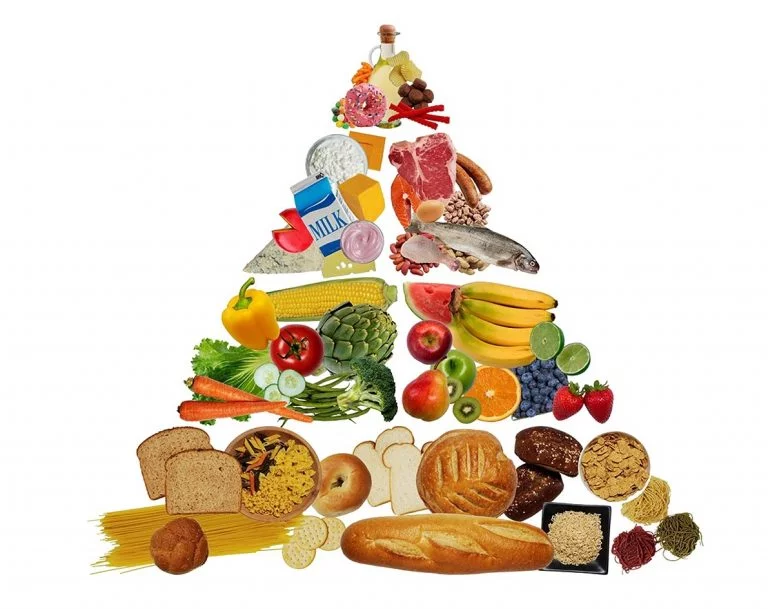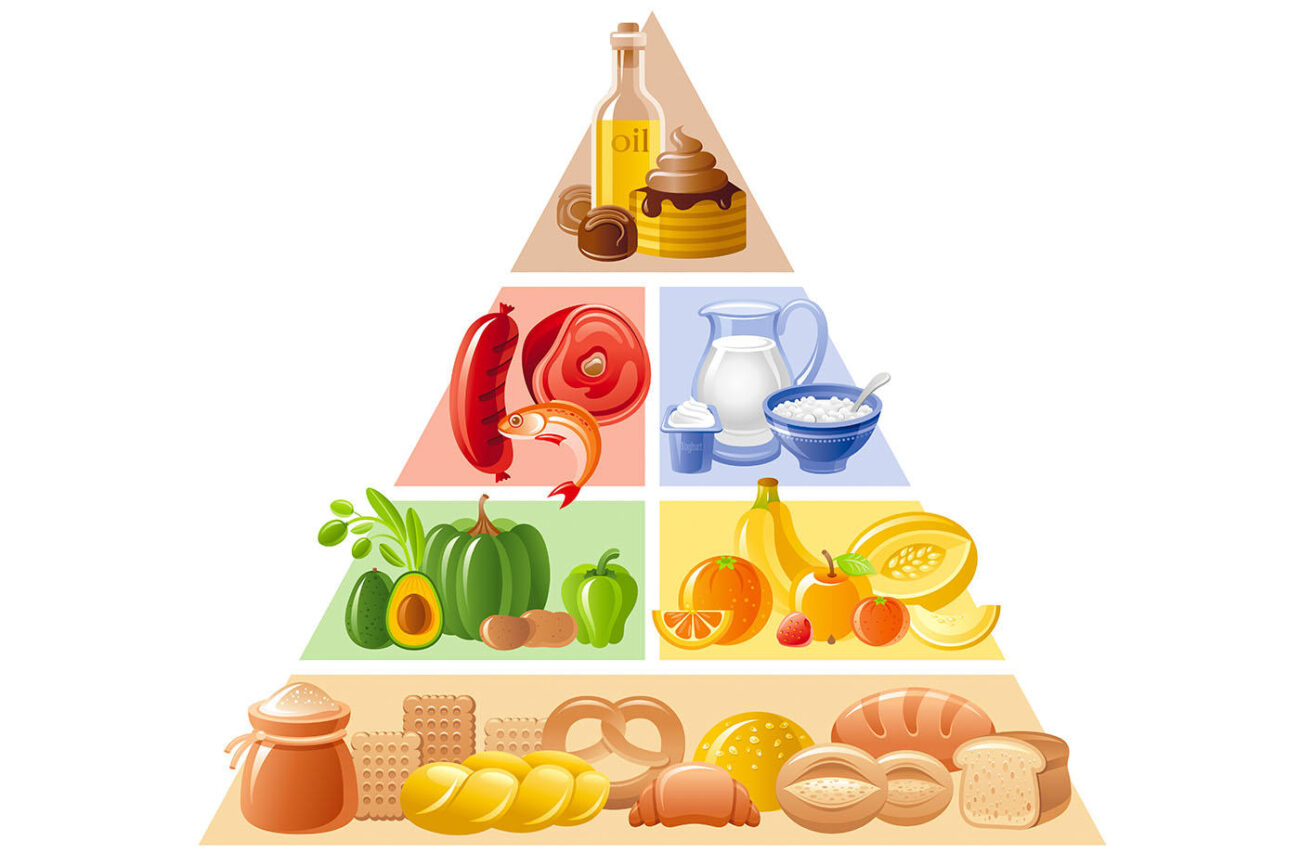When it comes to healthy eating, few visuals are as iconic—or as misunderstood—as the Food Pyramid. Originally introduced in the early 1990s, the Food Pyramid was created as a tool to help people make healthier dietary choices by illustrating the relative proportions of different food groups in a balanced diet.
Although dietary guidelines have evolved over time (and newer models like MyPlate have emerged), the food pyramid remains a helpful way to understand the basics of nutritional balance.
In this post, we’ll explain what the Food Pyramid is, explore its main food groups, and give practical recommendations for healthier eating.
What Is the Food Pyramid?
The Food Pyramid is a visual representation of how different types of foods contribute to a healthy diet. It’s shaped like a pyramid to show which foods you should eat more of (at the base) and which you should eat sparingly (at the top).
Key Features of the Traditional Food Pyramid:
- Base of the pyramid (bottom layer): Foods to eat the most—typically whole grains, fruits, and vegetables.
- Middle layers: Moderate amounts of protein sources and dairy.
- Top of the pyramid: Fats, oils, and sweets—foods to limit.
The Food Pyramid: Main Food Groups
While versions vary slightly depending on the country or organization, most traditional food pyramids include the following five main food groups:
1. Grains (Base Layer)
- Examples: Bread, rice, pasta, oats, cereals.
- Recommendation: Choose whole grains when possible (e.g., brown rice, whole wheat bread).
- Servings: 6–11 servings per day (depending on activity level).
2. Fruits and Vegetables
- Examples (Fruits): Apples, bananas, berries, oranges.
- Examples (Vegetables): Leafy greens, carrots, broccoli, tomatoes.
- Recommendation: Aim for a variety of colors and types.
- Servings: 2–4 servings of fruit and 3–5 servings of vegetables daily.
3. Protein (Meat, Fish, Eggs, Nuts, Legumes)
- Examples: Chicken, beef, eggs, beans, tofu, lentils, nuts.
- Recommendation: Choose lean proteins; limit red and processed meats.
- Servings: 2–3 servings per day.
4. Dairy (Milk, Yogurt, Cheese)
- Examples: Low-fat or fat-free milk, yogurt, cheese.
- Recommendation: Opt for low-fat or plant-based alternatives if needed.
- Servings: 2–3 servings per day.
5. Fats, Oils, and Sweets (Top Layer)
- Examples: Butter, oils, sugary snacks, sodas, desserts.
- Recommendation: Use sparingly. Choose healthier fats like olive oil or avocado in moderation.
- Servings: Minimal—these are not essential and should be consumed occasionally.
Updated Versions and Modern Adaptations
In recent years, nutrition guidelines have moved toward more intuitive and customizable models. For example:
- MyPlate (USA): Introduced by the USDA in 2011 to replace the Food Pyramid, MyPlate focuses on balanced meals by food group proportions on a plate.
- Mediterranean Pyramid: Emphasizes whole grains, fresh vegetables, olive oil, and lean proteins, particularly fish.
- Vegetarian/Vegan Food Pyramids: These adjust for plant-based diets, replacing animal proteins with legumes, nuts, and fortified alternatives.
Still, the classic food pyramid remains a valuable educational tool for understanding the principles of portion control and dietary balance.
General Recommendations for a Healthy Diet
- Prioritize whole foods: Eat more fresh fruits, vegetables, whole grains, and legumes.
- Limit processed foods: Reduce intake of added sugars, refined carbs, and trans fats.
- Stay hydrated: Water should be your primary beverage.
- Watch portion sizes: Use the pyramid as a guide for frequency and quantity.
- Be mindful of added sugars and salt: Especially in packaged snacks and sauces.
- Balance your plate: Try to include all major food groups in your meals.

The Food Pyramid is more than just a triangle—it’s a simple yet powerful reminder to eat a balanced, varied, and moderate diet. While modern nutrition science continues to evolve, the core idea remains unchanged: what we eat daily has a profound impact on our health.
Whether you’re meal planning for your family, trying to lose weight, or simply aiming to eat better, the food pyramid is a timeless tool to help you build a healthier plate—one layer at a time.
Disclaimer: This blog post is intended for educational purposes only and should not be considered medical advice. Always consult with a qualified healthcare provider or dietitian for personalized dietary guidance.

